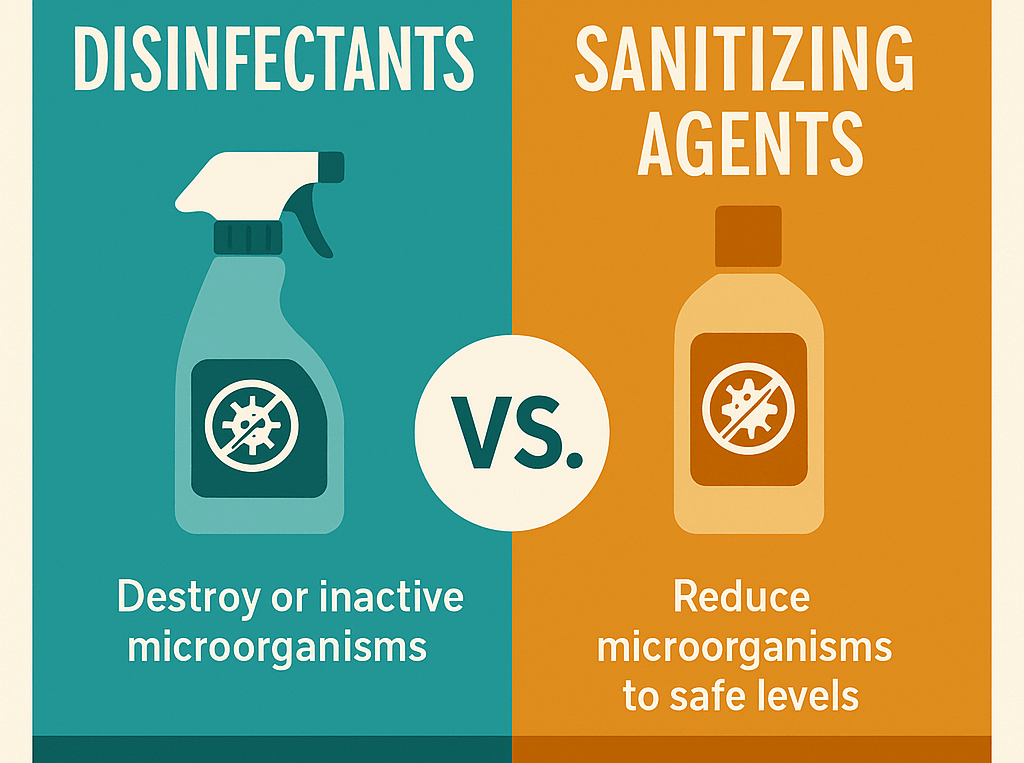
Choosing the Right Disinfectant or Sanitising Agent for Commercial Use
When it comes to maintaining cleanliness and hygiene, especially in commercial environments such as hospitals and hotels, choosing the right disinfectant or sanitising agent is crucial. With a sea of options available, it's important to understand what each product offers and how to use them effectively. As someone living in South Australia, I've seen firsthand the importance of these products in ensuring health and safety across various sectors.
Understanding Disinfectants and Sanitising Agents
Before diving into which products to choose, it's essential to grasp the fundamental differences between disinfectants and sanitising agents. These two may seem interchangeable, but they serve distinct purposes within hygiene protocols.
Definitions and Differences
Disinfectants
Disinfectants are chemical substances designed to inactivate or destroy microorganisms on inert surfaces. Unlike antibiotics that target microorganisms within the body, disinfectants are meant for surface application. They work by disrupting the cell walls of microbes, eliminating bacteria and viruses down to their core.
Sanitising Agents
Sanitising agents, or sanitizers, clean and disinfect surfaces in a less aggressive manner than disinfectants. These agents focus on reducing the number of microorganisms to a safe level, ideal for surfaces that frequently come into contact with humans, like those found in hospitality settings.
Types of Disinfectants
Choosing the appropriate disinfectant depends on various factors, including the level of efficacy required and the types of microorganisms you wish to eliminate.
Low-Level Disinfectants
These are effective against most vegetative bacteria and certain viruses but aren’t capable of eliminating hardier organisms like bacterial endospores. They're often used in environments where the risk of severe contamination is low.
Intermediate-Level Disinfectants
These disinfectants can kill most pathogens, excluding bacterial endospores, making them suitable for environments like dental surgeries where more robust measures are needed.
High-Level Disinfectants
With the ability to kill almost all microbial pathogens except for a large number of bacterial endospores, these are used in high-risk areas such as hospital operating theatres.
How Disinfectants Work
The effectiveness of a disinfectant hinges on various factors, including the type of microorganism, concentration, and the surface being treated. Disinfectants can be physical or chemical, with chemical disinfectants including substances such as alcohols and phenolics, each having distinct applications and effectiveness.
Applications of Disinfectants and Sanitizers
In Healthcare Settings
In hospitals, disinfectants are vital to infection control. Hospital-grade agents are used on medical instruments, floors, and linens to maintain a sterile environment, which is crucial in preventing hospital-acquired infections.
In Hospitality Environments
Within hotels, where guests interact with numerous surfaces, maintaining hygiene is paramount. Here, sanitisers are commonly used for surfaces in guest rooms and common areas to ensure a safe environment for all visitors.
In Wastewater Treatment
Disinfection processes in wastewater treatment, involving methods like chlorine and UV radiation, are essential in removing pathogens before water is responsibly reused or released safely into natural bodies of water.
Safety and Regulatory Considerations
Legal Requirements
Disinfectants and sanitizers are often regulated and need to be used according to strict guidelines. It is important to follow application instructions precisely, which include proper dilution and PPE requirements, to ensure both effectiveness and safety.
Personal Protective Equipment (PPE)
While handling these chemicals, the use of PPE is critical to avoid exposure to harmful agents. Make sure you check the label for required PPE such as gloves and masks, especially when dealing with industrial-strength products.
Environmental and Health Safety
While disinfectants do a great job of killing germs, it is important they are used responsibly to avoid environmental contamination. Consulting with environmental safety advisors may be necessary, particularly when dealing with potent chemicals.
Best Practices for Using Disinfectants and Sanitizers
Cleaning Before Disinfection
Always ensure surfaces are cleaned of visible debris before applying disinfectants. This not only maximizes the effectiveness of the disinfection process but also helps in understanding if further cleaning is necessary.
Following Label Instructions
Adherence to the instructions on product labels cannot be overstated. Correct usage instructions ensure that disinfectants work effectively. Misuse can not only diminish efficacy but may also result in health hazards.
Regular Maintenance
In commercial settings, regular maintenance of disinfection protocols is a must. This includes staff training and ensuring compliance with the latest health guidelines to combat ever-evolving pathogens effectively.
Common Types of Disinfectants
Phenolics and Alcohols
Phenolics are effective particularly against bacteria, while alcohols are widely used for quick disinfection tasks, though their efficacy can be hindered by organic matter.
Acids and Heavy Metals
These can serve as strong disinfectants but come with environmental and health risks, requiring careful use and disposal.
UV Radiation and Ozonation
As chemical-free methods, these are particularly useful in the wastewater treatment sector, offering a broad-spectrum solution without the chemical drawbacks.
Conclusion
Navigating the world of disinfectants and sanitising agents, especially for commercial purposes, requires a solid understanding of the different options and their specific applications. From healthcare to hospitality, these products remain a crucial part of maintaining health standards. By selecting the right product and adhering to proper usage guidelines, we contribute to a safer and healthier environment for everyone.
Don’t forget the importance of brands like CTSS that specialise in these products, bringing market-leading solutions to businesses. Investing in high-quality disinfectants and sanitising agents not only meets regulatory standards but ensures peace of mind in knowing you are using effective products that protect staff, clients, and customers alike.
